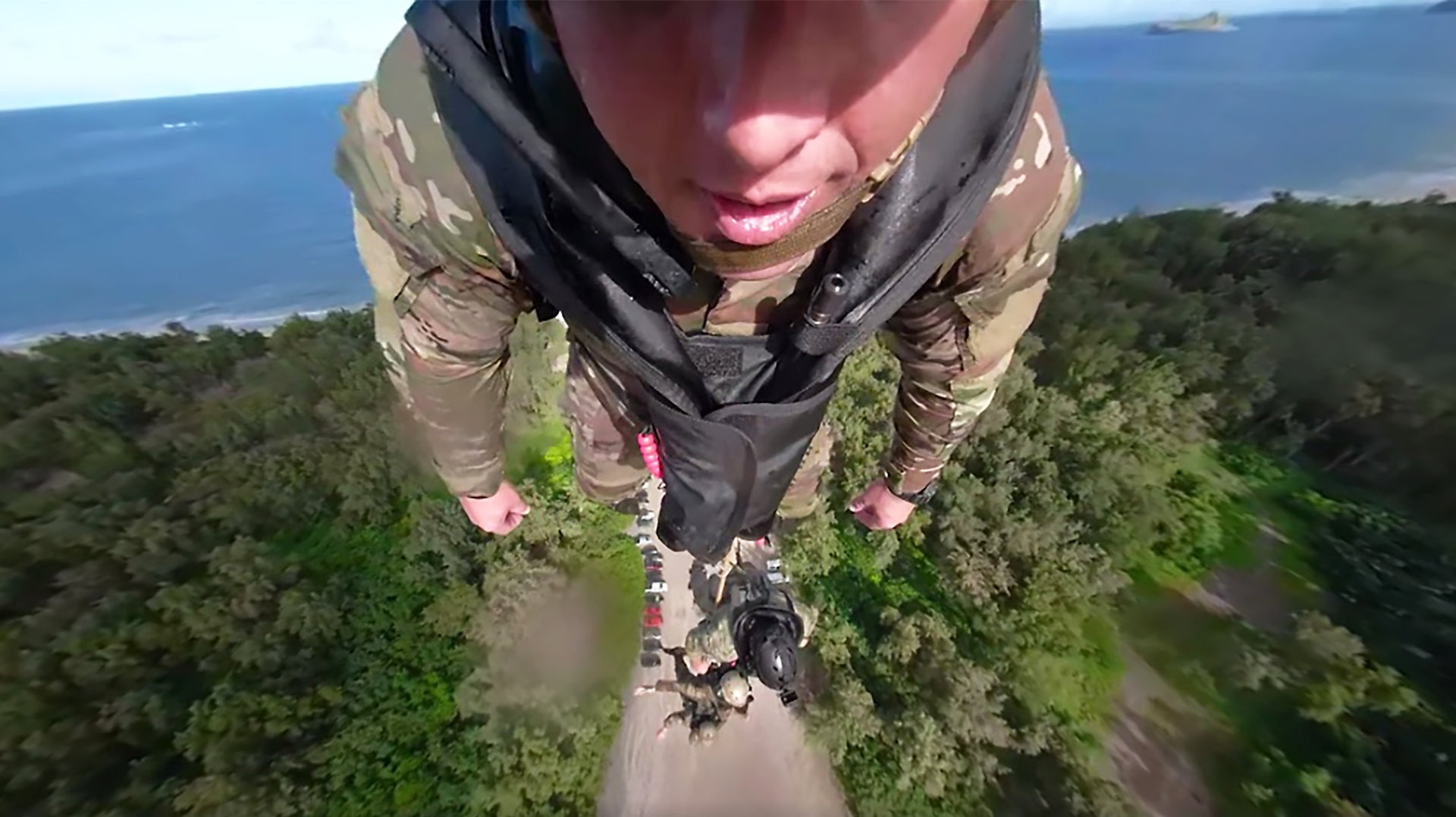Based in Hawaii, the Army’s 25th Combat Aviation Brigade truly flies birds of paradise and sometimes soldiers hitch a ride on one of them without even climbing aboard. Known as Special Patrol Insertion/Extraction (SPIE), the long-proven method allows for soldiers to be quickly inserted into or extracted from enemy territory even in rough or obstructed terrain where a helicopter can’t safely land. Beyond its critical tactical applications, it is the ultimate e-ticket ride, sending commandos slung below a charging helicopter flying through the air as a team. Even though you may have seen this technique before, I guarantee you have never seen it like how it is showcased in the 360 video below.
Here is a direct link to the Facebook video in case it doesn’t propagate automatically below on your mobile device:
SPIE comes in two flavors, standard and ‘wet,’ the latter being for quickly plucking operators from the water as seen in the video above. SPIE and its closely related cousin, the Stabilized Body (STABO) method of aerial troop transfer, were developed by the U.S. military nearly 50 years ago and have since spread to many other militaries around the globe. It is especially popular among special operations communities.

Generally speaking, it works like this:
A helicopter drops a specially designed and weighted SPIE rope down to soldiers awaiting hookup below. The soldiers then attach their harnesses to the rope with carabiners via d-rings on the rope. Then the helicopter gently lifts them into the air and over any obstacles vertically before accelerating forward to a pre-set speed as crew chiefs monitor the action of the line below to make sure it stays within certain parameters.

Once at the landing zone, the group of commandos is gently lowered back down to the ground and each member clears the area for the next to touch down safely while also keeping the line taught. It’s a remarkably simple but highly effective way to make otherwise impossible or too risky rapid helicopter infiltrations and extractions a reality. In theory, it also allows the troops themselves to shoulder their weapons and return fire if need be as they approach or depart their pickup zone, although it seems the use of this tactic depends on the specific doctrine of the military and/or unit.

The UH-60 Black Hawk helicopter in the 360 video belongs to 2nd Batallion, 25th Aviation Regiment based at Wheeler Army Airfield in central Oahu. Being based in Hawaii, the unit gets some awesome training opportunities between the diverse set of U.S. military units based locally and that rotate through the region as well as the international exercises that occur regularly around the islands.

So if you ever wanted to fly through the air with your buddies while strung beneath a helicopter—possibly while wet, at night, and while being shot at—I suggest you pay a visit to your local recruiting office, they can hook you up…literally!
Contact the author: Tyler@thedrive.com
